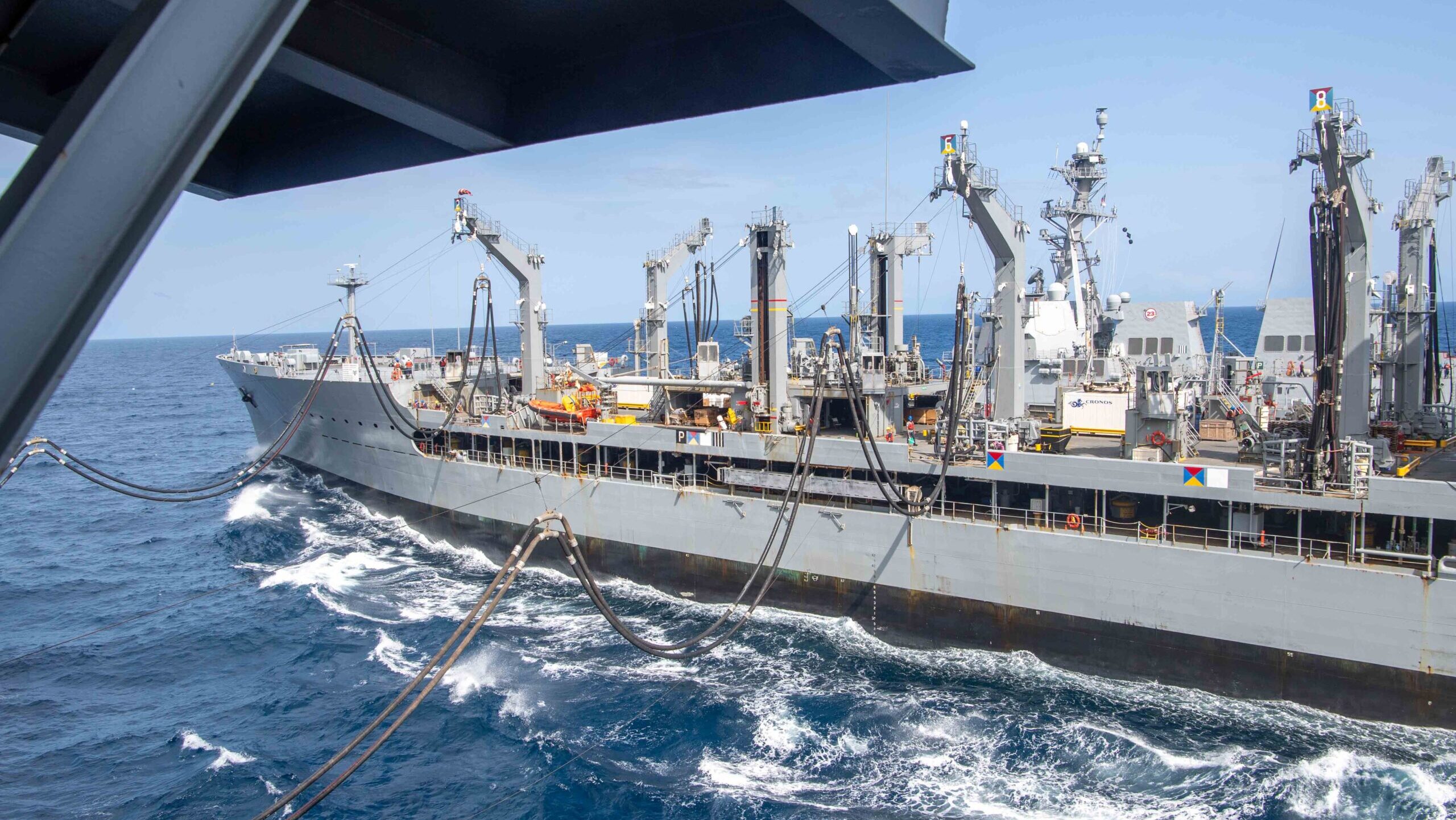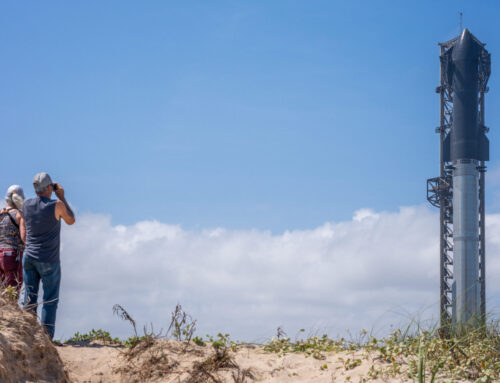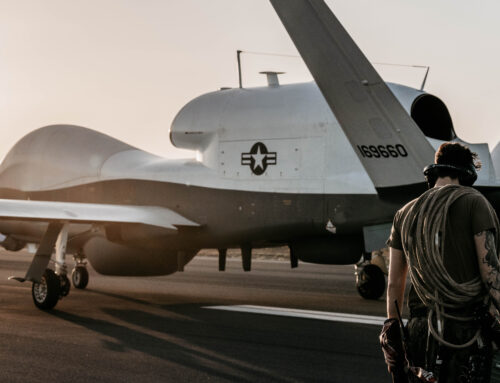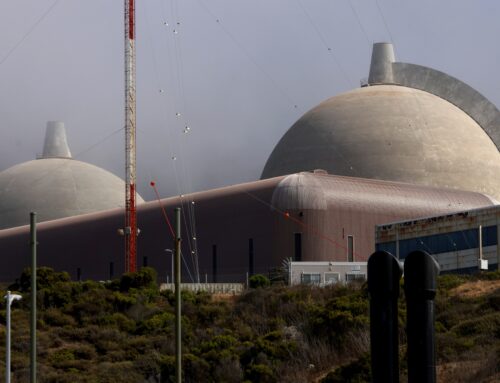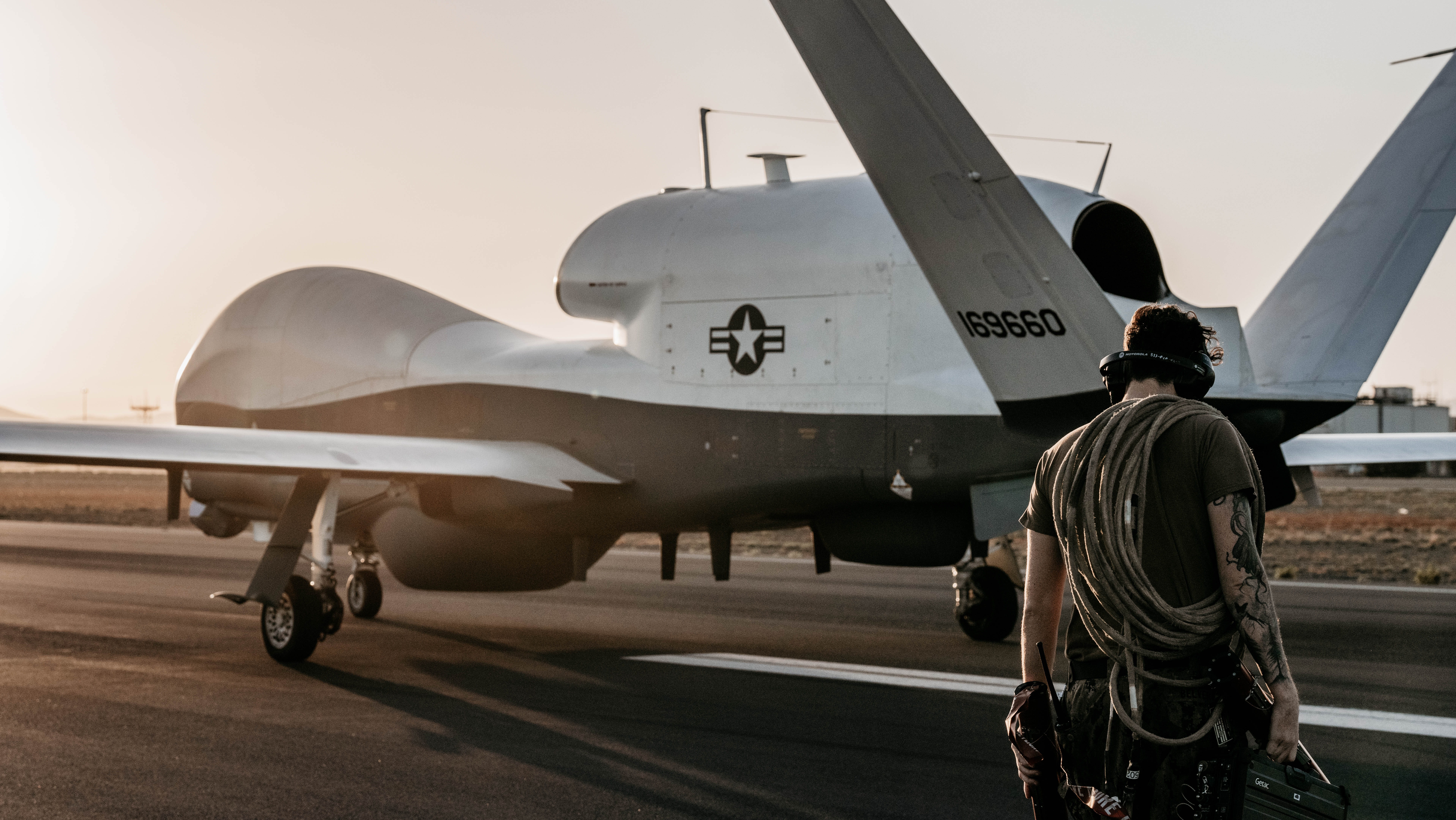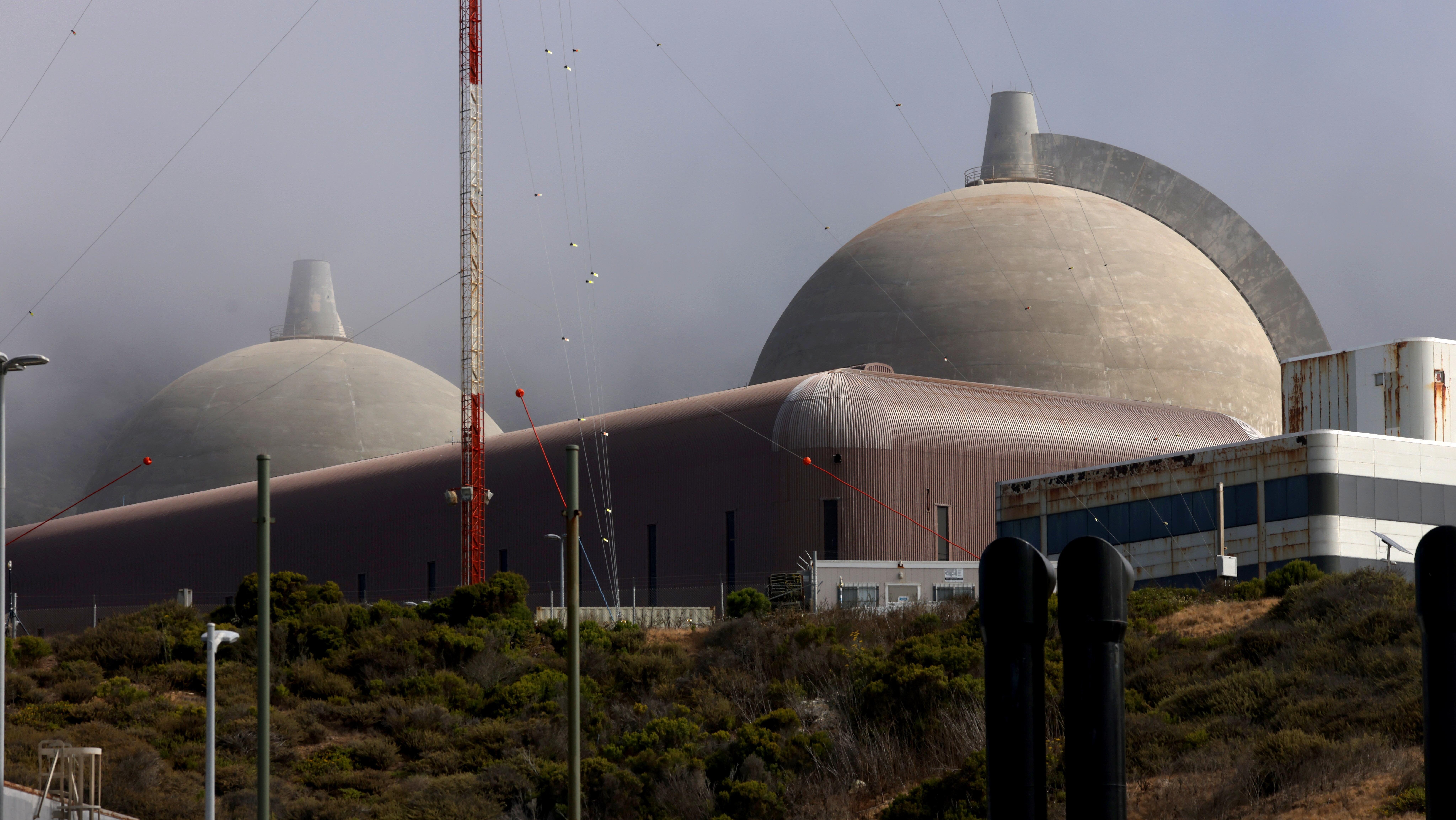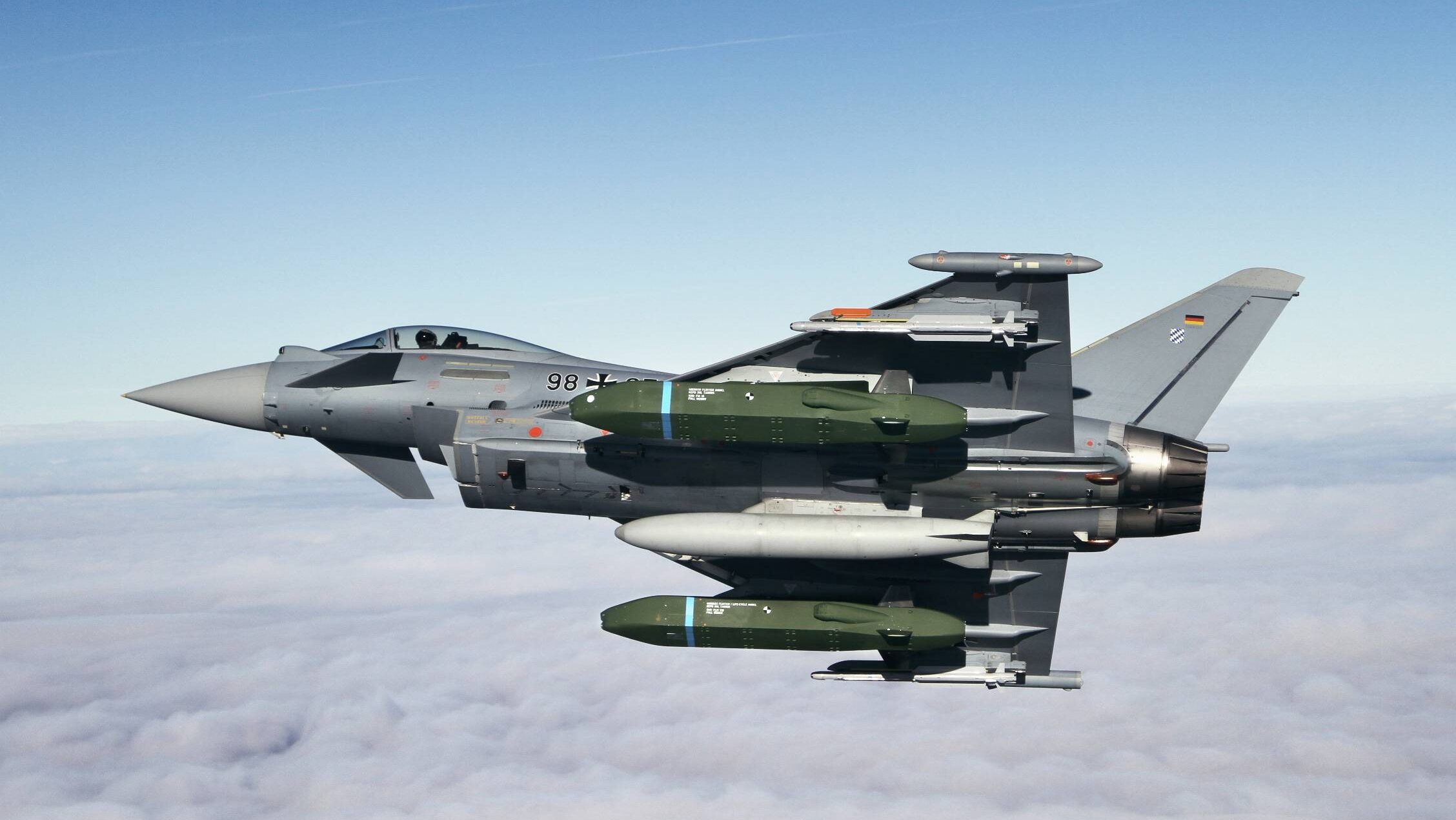The Military Sealift Command fleet replenishment oiler USNS Big Horn (T-AO 198) conducts a fueling-at-sea with the Nimitz-class aircraft carrier USS Theodore Roosevelt (CVN 71), July 10, 2024.(U.S. Navy photo by Mass Communication Specialist 2nd Class Rashan Jefferson)
WASHINGTON — A US Navy replenishment oiler, one of an aging but critical US fleet, “sustained damage” while operating in the Middle East on Sept. 23, a Navy official told Breaking Defense.
All crewmembers of the USNS Big Horn (T-AO-198) are safe, and US 5th Fleet is assessing the situation, the official said.
Unverified videos and photographs circulating on social media today claim to show at least one room on the Big Horn flooded. GCaptain first reported the ship had run aground and was being towed to Dubai.
The Navy official told Breaking Defense that “it is too early to speculate on the specifics or cause of the damage” and that more information would be provided as it became available. The official declined to verify the authenticity of the imagery on social media.
News of the Big Horn’s damage comes at a tenuous moment for the Navy’s support ship fleet. Those vessels, each with their own auxiliary functions and crewed by civilian mariners, are of varying ages, with many in need of recapitalization.
USNI News first reported Military Sealift Command, the agency charged with managing auxiliary ships, had drafted a plan to remove the crews from 17 Navy support ships over a lack of qualified mariners. A Navy spokesman previously declined to comment on that report.
Sal Mercogliano, a maritime historian and professor at Campbell University in North Carolina, said on Twitter the Big Horn’s situation “demonstrates is the fragility of our maritime logistics system to support the fleet.”
“With just 14 fleet oilers, 2 supply class fast combat stores ships and 12 dry cargo/ammo ships, we don’t have much depth in the fleet to support multiple strike group deployments, routine operations and training,” he said.
“If Big Horn is out of service the two [dry cargo/ammunition ships] in the region can provide some fuel, along with shore side facilities. Other assets will have to be pulled from the western Pacific or Atlantic as there is only one oiler in the” Mediterranean, he continued.


